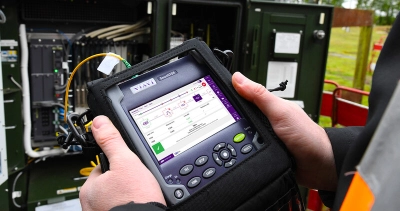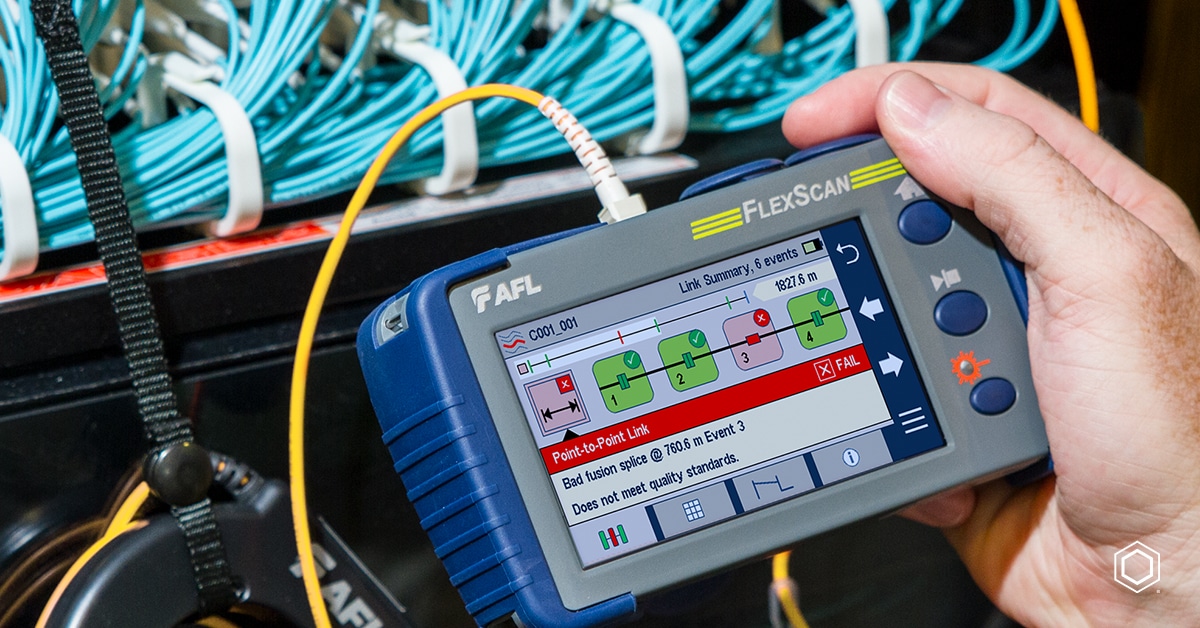Engineers use the optical fibre diameter analyser to verify fibre uniformity.
Engineers use the optical fibre diameter analyser to verify fibre uniformity.
Blog Article
Checking Out the Benefits of Optical Fiber Testing for Enhanced Communication Systems
The relevance of optical fiber testing in contemporary interaction systems can not be overstated, as it serves as a structure for ensuring network reliability and efficiency. Using sophisticated methods such as Optical Time-Domain Reflectometry (OTDR) and insertion loss evaluation, organizations can not only recognize faults yet additionally optimize their arrangements. This proactive testing strategy has extensive effects for signal high quality and operational effectiveness, increasing the question of how these methods add to long-term sustainability in an ever-evolving technological landscape. Understanding these dynamics is crucial for stakeholders intending to preserve a competitive edge.
Relevance of Optical Fibre Screening
The value of optical fibre screening can not be overstated in today's data-driven setting. As organizations significantly depend on high-speed information transmission for day-to-day operations, the stability and efficiency of optical fibre networks are vital. Evaluating guarantees that these networks can support the vast quantities of information generated and sent flawlessly, cultivating effective interaction and connectivity.
Optical fibre testing serves numerous vital features, including validating installation top quality, recognizing prospective faults, and figuring out general system performance. Regular screening can avoid expensive downtimes and solution disruptions, allowing companies to maintain functional continuity. It aids in compliance with sector criteria and policies, ensuring that fibre optic setups satisfy required requirements for safety and dependability.
Additionally, screening can boost the longevity of fibre optic systems. By proactively identifying concerns such as signal loss, attenuation, or connector failures, companies can attend to issues prior to they escalate, therefore prolonging the life of their framework. In recap, optical fibre testing is not just a technological demand however a tactical financial investment that improves network dependability, maximizes efficiency, and inevitably sustains the growth and performance of modern-day communication systems.
Key Testing Techniques

OTDR is a vital method used to recognize faults, procedure splice losses, and evaluate the total honesty of a fiber optic web link. By sending out a pulse of light down the fiber and examining the mirrored light, technicians can identify places of faults and examine the network's efficiency over fars away.
Insertion loss screening determines the amount of signal loss that happens when light passes through a connection or splice. This technique is crucial for confirming that links meet given loss limits, which is important for maintaining optimal efficiency in communication systems.
Optical return loss testing measures the amount of light reflected back towards the resource as a result of flaws in the fibre or connections. High return loss worths show better performance and lowered signal destruction.
Together, these testing approaches give a comprehensive evaluation of fiber optic networks, guaranteeing their reliability and capability in varied communication applications.
Influence On System Efficiency
Effective optical fibre screening directly influences the overall efficiency of interaction systems. By making certain the stability of fiber optic cords, testing determines prospective faults such as attenuation, splice loss, and adapter misalignment. These issues can significantly degrade signal high quality, resulting in disruptions and reduced data transmission rates.

In addition, regular optical fibre screening adds to long-lasting system sustainability. It makes page it possible for early detection of wear and tear, permitting timely maintenance and upgrades prior to major failures happen. This not only extends the lifespan of the infrastructure but also makes sure that communication systems continue to be competitive in regards to performance.
Cost-Effectiveness and Performance
Cost-effectiveness is a crucial factor to consider in the deployment and maintenance of optical fiber networks. Implementing durable optical fibre testing procedures can considerably minimize operational costs by identifying problems before they rise into major troubles. optical fibre testing equipment. By identifying faults, attenuation, and various other efficiency obstacles early, companies can stay clear of pricey repairs and downtime, which can interfere with solutions and cause revenue loss
Additionally, reliable screening methods enhance the setup procedure, permitting specialists to function a lot more effectively. This converts to decrease labour expenses and faster job completion times. Advanced testing equipment, such as Optical Time Domain Reflectometers (OTDRs), enables a precise evaluation of fibre quality, making sure that just ideal products are used, therefore lessening waste.
Normal testing also adds to better resource read allotment. By comprehending the network's efficiency, organizations can make enlightened choices concerning upgrades and growths, making sure that investments are made where they are most needed. In summary, optical fibre testing enhances cost-effectiveness and effectiveness, supporting the long-lasting sustainability and competitiveness of communication systems in a significantly demanding market.
Guaranteeing Long-Term Dependability
Applying rigorous optical fibre screening not only boosts price savings and operational efficiency but also plays a critical function in making certain the lasting integrity of interaction networks. Constant screening methods, including attenuation and bandwidth assessments, assistance identify potential degradation in fibre performance prior to it results in solution disturbances.
By employing innovative testing approaches, network operators can identify mistakes or weak points in the fibre infrastructure, enabling prompt removal. This aggressive method minimizes downtime, making sure that communication systems remain practical and effective. Routine testing adds to the development of a more durable network, as drivers can adjust and optimize their framework based on real-time data insights.
In addition, ensuring conformity with industry standards with optical fiber screening enhances the quality and honesty of the entire communication system. This adherence not only boosts confidence amongst stakeholders yet likewise straightens with governing needs, which are increasingly rigorous.
Final Thought
In final thought, optical fibre testing serves as a basic component in improving communication systems. By utilizing various testing methods, such as OTDR and insertion check this loss evaluations, networks can attain ideal efficiency and reliability.
Report this page